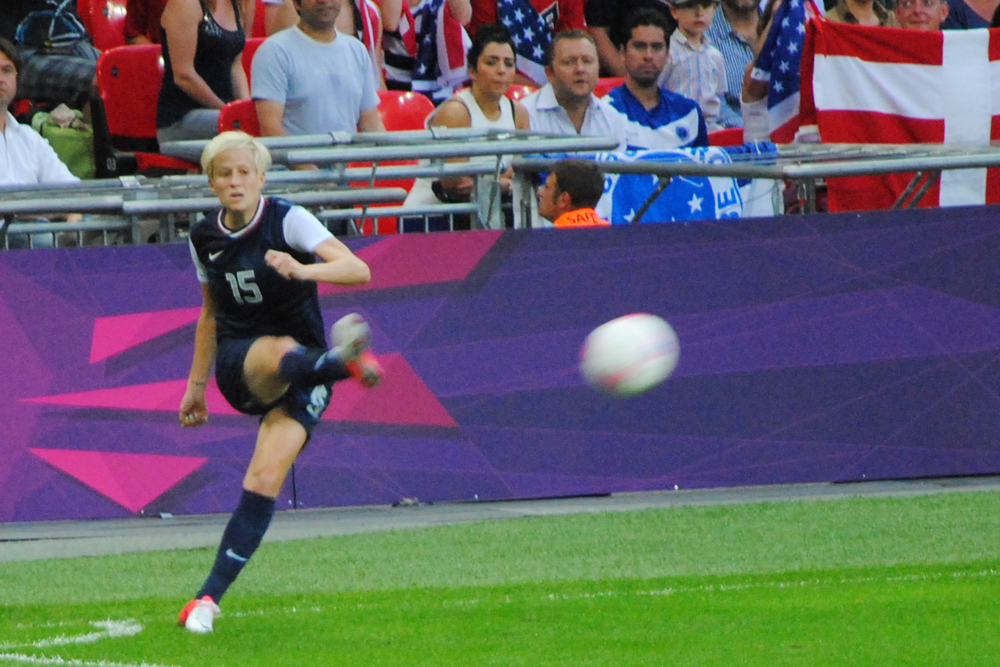On May 29, 2015, Sepp Blatter was re-elected to his fifth term as FIFA President, over Prince Ali Bin al-Hussein of Jordan. The Swiss Attorney General and the U.S. Department of Justice continue to investigate FIFA with questioning and arrests, and with indictments scheduled. As a result, Blatter has announced he will resign as president. This scandal has distracted some from the 24 countries who entered the FIFA Women’s World Cup with dreams of holding the prestigious trophy.
Lost in the commotion of the FIFA corruption scandal was the anticipation for the Women’s World Cup, held this year in Canada. The host nation’s team kicked off the tournament on June 6 at the Commonwealth Stadium in Edmonton against China PR. Portland Thorn and former University of Portland Pilot star Christine Sinclair converted a stoppage time penalty to give Canada a 1–0 win and three points to start the competition.
The U.S. Women’s National Team has gone through some changes since Pia Sundhage decided to take over the Swedish National Team in 2012. Her 91–6–10 record as head coach includes two Olympic gold medals and a second-place finish at the 2011 FIFA Women’s World Cup. Tom Sermanni took over in 2013. After a win-less Algarve Cup in 2014, the U.S. Soccer Federation decided to hand the reins over to Jill Ellis.
Group D, considered by many experts and analysts as the “Group of Death,” includes the national teams for the United States, Sweden, Australia and Nigeria. This group makes up the teams with the highest combined FIFA rating in the tournament, generally making them the toughest group.
The United States is ranked second, Sweden fifth, Australia tenth and Nigeria thirty-third. Sweden dropped no points in their 10 qualifying matches in their run to get to the World Cup. Australia finished second in the AFC Women’s Asian Cup, behind defending World Cup winner Japan, who won the final 1–0.
A story coming into the World Cup was the health of Thorns star Alex Morgan, who was dealing with a bone bruise in her left knee that resulted in missed games for Portland. The United States kicked off group play against the Australian women’s national soccer team—nicknamed the Matildas—at Winnipeg Stadium on June 8. The U.S. opened in their traditional 4–4–2 formation with Hope Solo in goal. The defense consisted of Klingenberg, Johnston, Sauerbrunn and Krieger. The midfield consisted of former University of Portland Pilot Megan Rapinoe, plus Lauren Holiday, Carli Lloyd and Christen Press. Sydney Leroux and Abby Wambach made up the forward pairing in attack for the U.S.
In the twelfth minute, Rapinoe opened the scoring. The Matildas answered back in the twenty-seventh minute with Lisa De Vanna finishing past Solo. In the sixty-first minute, Press scored her first World Cup goal to put the Americans up 2–1. Rapinoe got a brace in the seventy-eighth minute. Portland Thorns Tobin Heath and Alex Morgan came on as subs in the sixty-eighth and seventy-ninth minutes. Houston Dash midfielder Morgan Brian made her World Cup debut in the eighty-sixth minute. The 3–1 win propelled the U.S. to first in the group.
June 12 would see an encounter between Pia Sundhage Sweden’s against her former team, the United States. Her knowledge of the players was well documented in the lead-up to the game. This resulted in a 0–0 draw with the U.S. The Americans (1–0–1, 4 points) were first in the group after two games.
On June 16, in Vancouver’s BC Place Stadium, the U.S. Women’s National Team wanted to finish first in their group. To guarantee that, they would need to win against Nigeria. Seconds before half-time, Captain Abby Wambach sent a Rapinoe corner kick home with a volley to make it 1–0. That lead would hold and the Americans won Group D with 2–0–1, 7 points.
In the Round of 16 match-up against Colombia, forward Lady Andrade guaranteed a win over the United States. Colombian goalkeeper Catalina Perez took out Morgan and received a red card, dropping her team down to 10. Wambach would miss the ensuing penalty kick and Morgan scored in the fifty-third minute to make the game 1–0. Rapinoe drew a penalty in the sixty-sixth minute, which Lloyd calmly put in the back of the net, past back-up goalkeeper Stefany Castano. The 2–0 lead would be the final score, putting the U.S. in the quarterfinals against China PR.
On June 26, in Ottawa’s Lansdowne Stadium, the anticipated quarterfinal matchup between China PR and the U.S. Women’s National Team took place. The U.S. team was forced to play without their two stalwarts, Rapinoe and Holiday, in midfield. To counter the loss, the team started Alex Morgan with Amy Rodriguez, who had made only one appearance in the 0–0 draw against Sweden.
Morgan Brian and Kelley O’Hara would both come on in the eleventh minute. In the second minute, the lineup paid off with Rodriguez going one and one with the keeper before sending it wide of goal.
The U.S. dominated the first half with 54 percent possession and 11 total shots, three on-goal. Their opponents were kept to 46 percent possession with four total shots and none on goal.
China, however, kept the game scoreless with their numbers in defense. On a long pass from Johnston, Lloyd leapt higher than her defender and placed the ball in the corner to make the game 1–0 in the fifty-first minute. In the second half, the U.S. raised possession to 56 percent, due to high pressure on defense. The U.S. team would walk off the field with a victory.
The semifinals are up next for the U.S., against number one ranked Germany. This is the match every soccer spectator has been waiting to see. Kickoff happens June 30 at 4 p.m. in Montreal’s Olympic Stadium.






